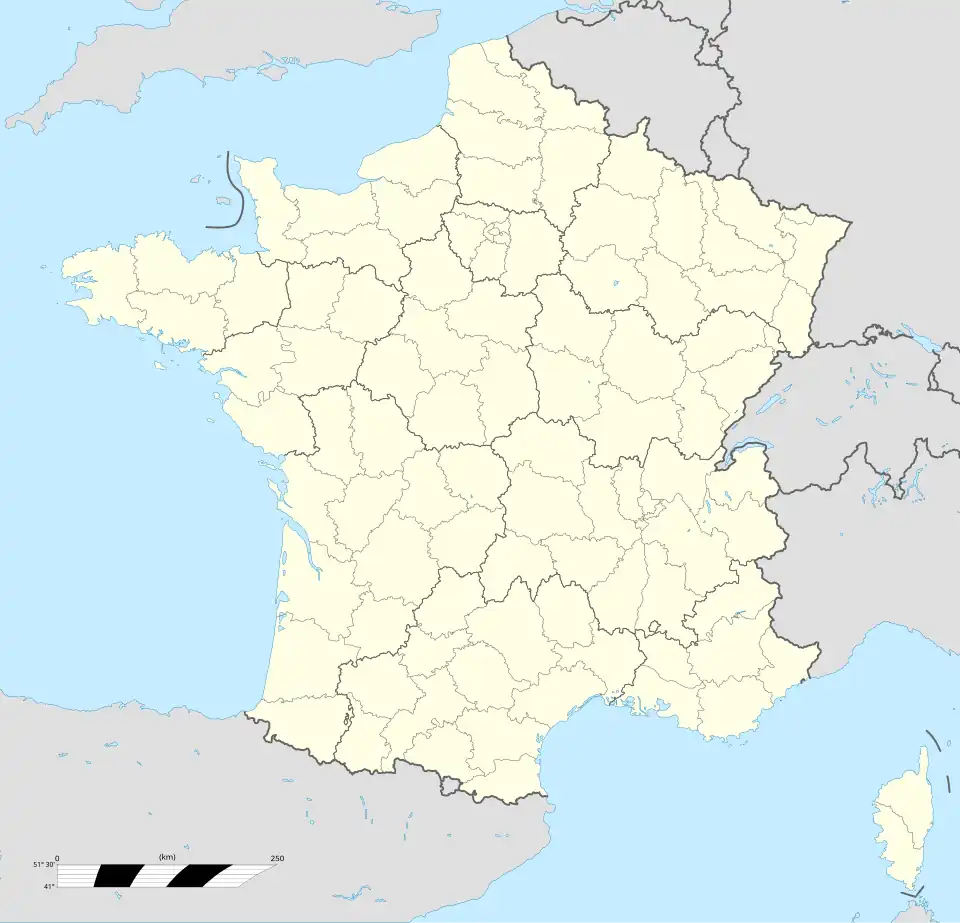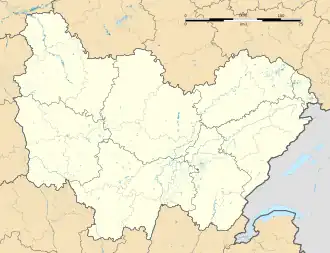Glux-en-Glenne
Glux-en-Glenne | |
|---|---|
A general view of Glux-en-Glenne | |
Location of Glux-en-Glenne | |
 Glux-en-Glenne  Glux-en-Glenne | |
| Coordinates: 46°57′26″N 4°01′54″E / 46.9572°N 4.0317°E | |
| Country | France |
| Region | Bourgogne-Franche-Comté |
| Department | Nièvre |
| Arrondissement | Château-Chinon |
| Canton | Château-Chinon |
| Intercommunality | CC Morvan Sommets et Grands Lacs |
| Government | |
| • Mayor (2020–2026) | René Blanchot[1] |
Area 1 | 22.06 km2 (8.52 sq mi) |
| Population (2022)[2] | 87 |
| • Density | 3.9/km2 (10/sq mi) |
| Demonym | Gluxois |
| Time zone | UTC+01:00 (CET) |
| • Summer (DST) | UTC+02:00 (CEST) |
| INSEE/Postal code | 58128 /58370 |
| Elevation | 409–855 m (1,342–2,805 ft) |
| Website | www |
| 1 French Land Register data, which excludes lakes, ponds, glaciers > 1 km2 (0.386 sq mi or 247 acres) and river estuaries. | |
Glux-en-Glenne (French pronunciation: [ɡly ɑ̃ ɡlɛn]) or simply Glux is a rural commune in the Nièvre department in central France.[3] It is on the departmental border with Saône-et-Loire.
History
On 31 May 1944, amid the German occupation of France, the Gestapo arrested Camille Barnet, abbot of Glux-en-Glenne and neighbouring Saint-Prix, accused of having supported the French Resistance in the Morvan. He was tortured to death until 9 June.[4]
Demographics
As of 2022, the estimated population was 88.
See also
References
- ^ "Répertoire national des élus: les maires". data.gouv.fr, Plateforme ouverte des données publiques françaises (in French). 2 December 2020.
- ^ "Populations de référence 2022" (in French). The National Institute of Statistics and Economic Studies. 19 December 2024.
- ^ Commune file, INSEE.
- ^ Jean-Christophe Henriet (1 August 2014). "Commémoration 1944 : hommage à l'abbé Bornet arrêté par la Gestapo de Nevers". www.lejdc.fr (in French).
Wikimedia Commons has media related to Glux-en-Glenne.